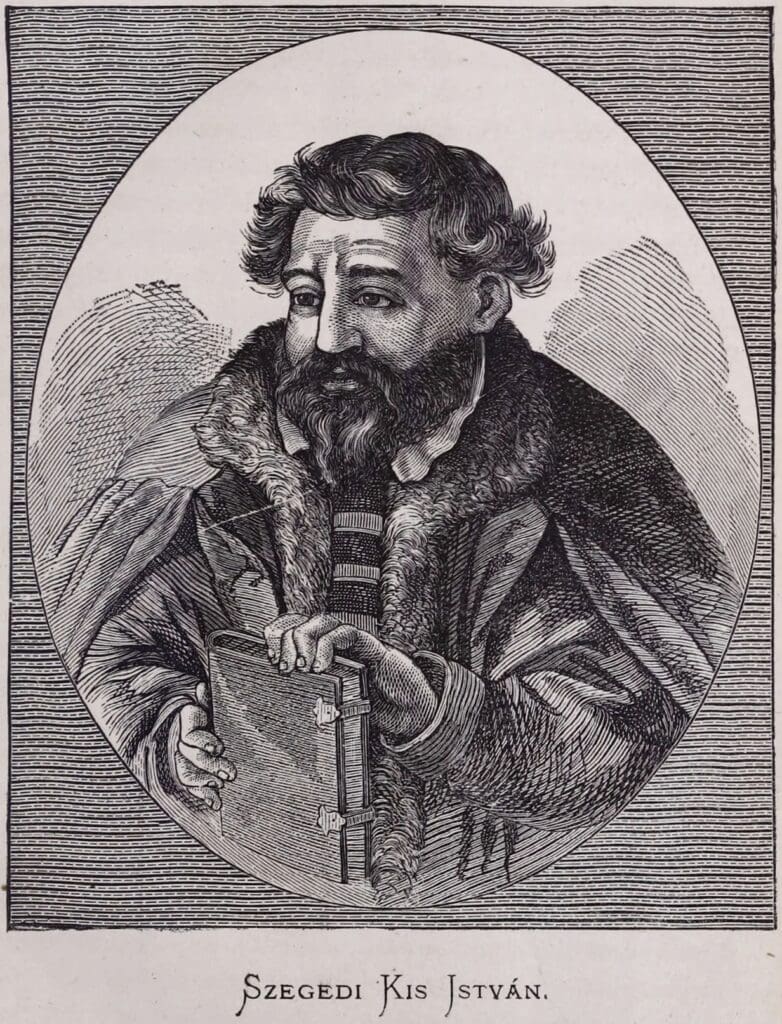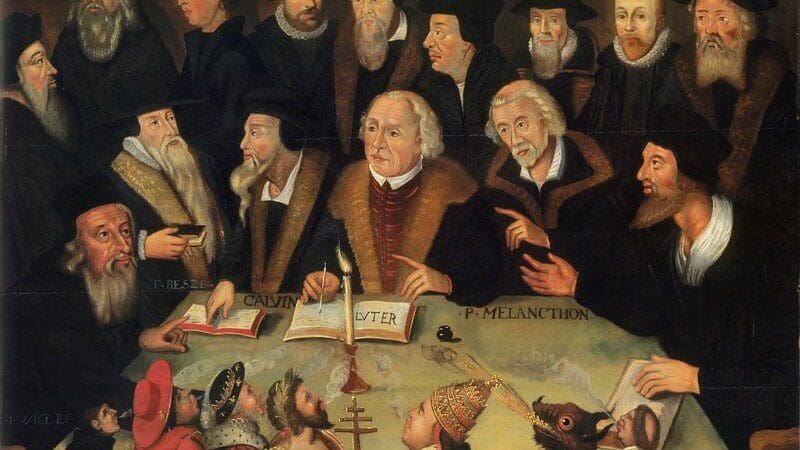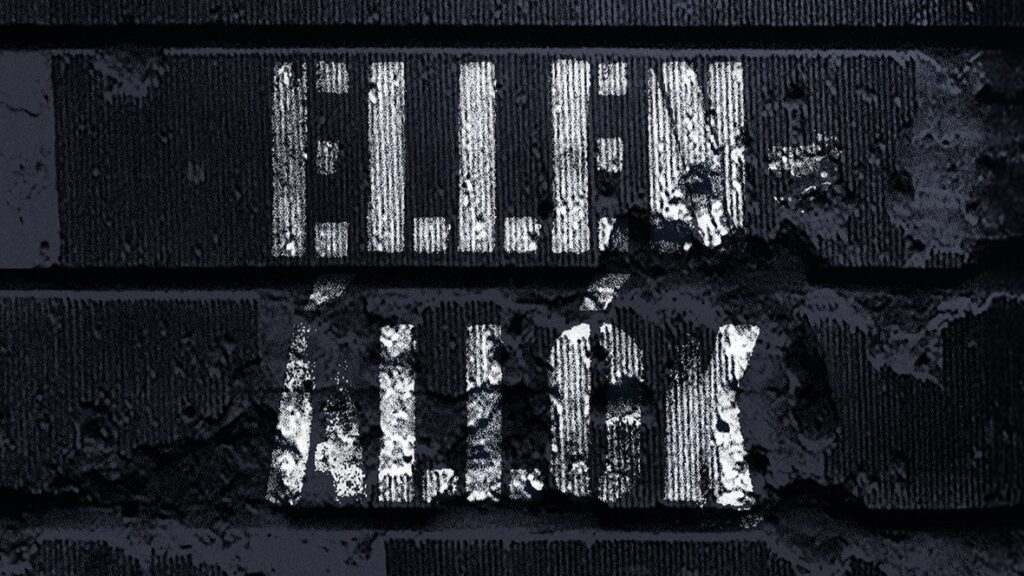Part II: Depictions of 16th-Century Preachers*
The surviving written sources, the synodal decisions, considered it paramount to clarify first and foremost what pastors should not wear when preaching. The adjectives ‘decent, mediocre, modest’, used to describe the desirable type of attire pastors should wear, are quite general and leave posterity in a state of uncertainty regarding the apparel of preachers. Therefore, we must scrutinize other sources testifying to the clothing of 16th century preachers.
Máté Skaricza, a student of István Kis Szegedi—a prominent figure of Transdanubian Reformation—not only translated psalms brilliantly but was also famous for his artistic talent. Today, preacher Skaricza from Jászberény is regarded as an excellent painter. In his work on the life of István Kis Szegedi, he wrote the following: ‘Here I am finishing a more perfectly painted portrait of Szegedi, which, motivated by my great love and respect for him, I boldly started at home on some papers and communicated this intention of mine to Szegedi, even though otherwise I do not regard myself in the slightest as excellent in this art. I am also presenting the results of this daring venture of my youth, and at the same time the poem, too, with which I offered this painting to Szegedi…’
Máté Skaricza’s painting of Szegedi was used as a model by an unknown Swiss artist, and a woodcut portrait of the prominent figure of the Hungarian Reformation was thus created.
This was a great blessing—as it turned out later—since the oil portrait was destroyed,
but the woodcut survived.
While unfortunately we don’t know what colour the clothing of the thick haired, bearded, and moustached Szegedi was, what is most likely is that he wore an ankle-length, sleeveless cloak; his dolman was certainly colourful—the patterns testify to this —and it was made of brocade material and front laced. Under the dolman, he wore a white shirt with a wavy collar (perhaps an early form of a ruff).

The title page of Péter Méliusz Juhász’s work entitled Hungarian Sermons, published in 1563, was decorated with a woodcut, on which we also see a seated male figure wearing a moustache, a beard, a flat cap or beret, a robe with large sleeves, who reading from a large book in front of him. The identity of the person portrayed is disputed. Some believe that it is of Méliusz himself, others rebut that assumption. Whoever is right, it is certain that this engraving is also a valuable source regarding the clothing of 16th century Protestant preachers.
Hungarian art writer, archaeologist, and historian János Szendrei wrote the following about preachers’ garments in an article: ‘During the Reformation, the standard clothing of the Hungarian reformers was above-the-knee trousers, and tall, black felt stockings. These trousers were called ‘pulider’, whereas the stockings were known as ‘salavári’ (Editor’s note: the shalwar. End note.) The Salavárs wore shoes that were known as calf-nosed, after the shape of the shoes’ nose resembling that of a calf. In addition, some also wore high boots. Their vests were long. On top of that came the dolman, which usually reached down to the waist. At first, the dolman had wide binders made of felt; later these were replaced by fur buttons. Around their waists, pastors wore a belt made of black fur. However, this started to go out of fashion around 1680. In winter, they wore a ‘suba’, a loose cape with slits on the sleeves, through which the sleeves of the dolman could be stuck out. The suba was mostly made from black sheep fur or white fox fur.’
Szendrei, however, does not indicate what he bases his claims on, nor does he cite any sources.
If we didn’t know that the author is a distinguished researcher of the history of Hungarian costumes, we would think the article is the work of a charlatan. He dresses the preachers as horse soldiers, because the salavári were riding breeches, covered with leather up to mid-thigh, which the German cavalry called ‘pulders’. In addition, the concept of the ‘calf-nosed’ sandals is also interesting, because old Hungarian language did not know the term ‘calf’. What János Szendrei says about the preachers’ hat also leaves one to wonder: ‘Generally, the Reformed priests in our country during the Reformation wore a round hat with a low top, the small brim of which was hung on three sides with a black cord to the button on the top of the hat.’ The researcher is probably wrong. The hat shape he is talking about can be dated to the reign of Joseph II, when the Habsburg ruler banned all traditional Hungarian clothing; it is therefore hard to believe that in the 16th century the Reformed preachers would have dressed the way he described it.
To be continued.
*This article was largely based on Béla Takács’s book titled A magyar református lelkészek öltözete (The Garments of Hungarian Reformed Church Pastors), Hernád kiadó, Debrecen, 2004.







